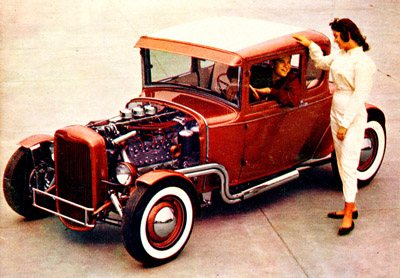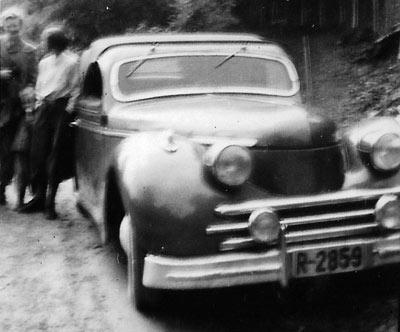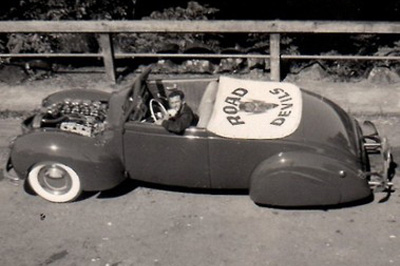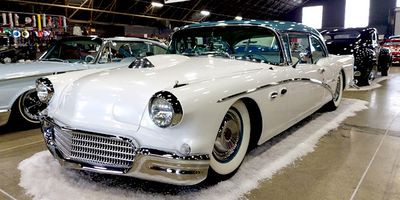Channeling


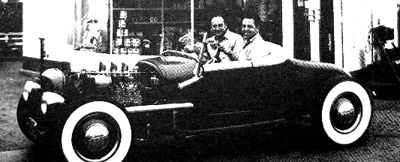



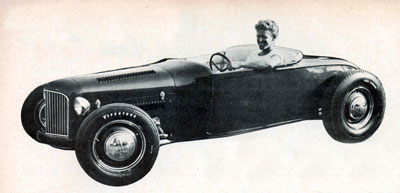

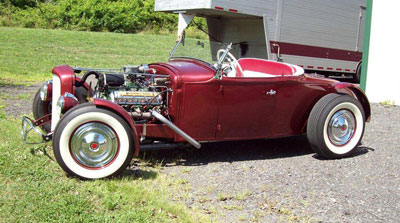


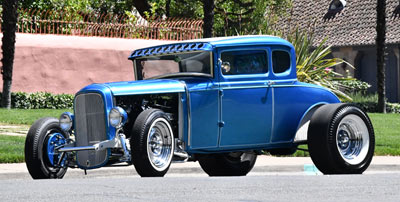



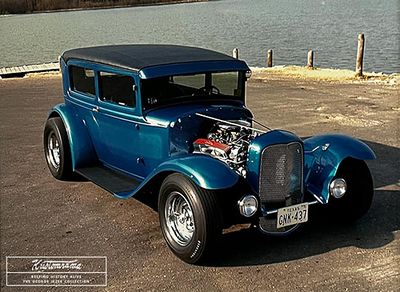
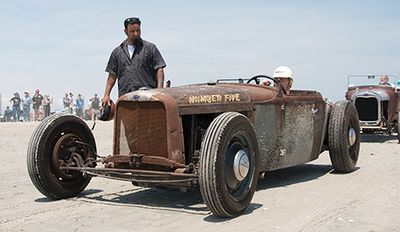
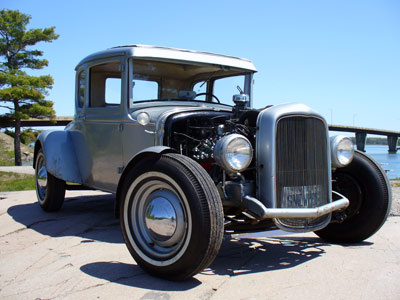

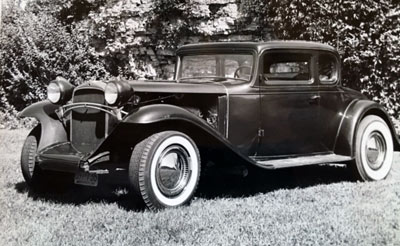


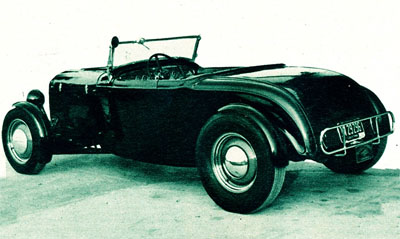


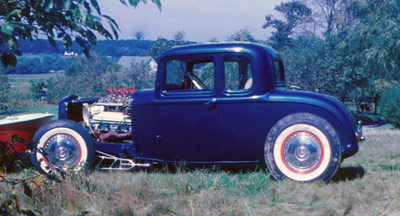
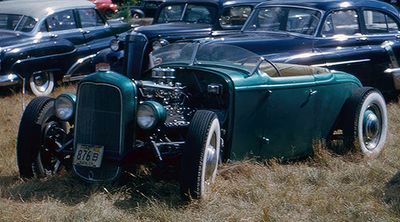



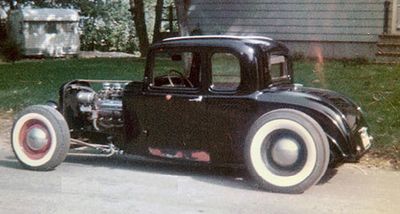
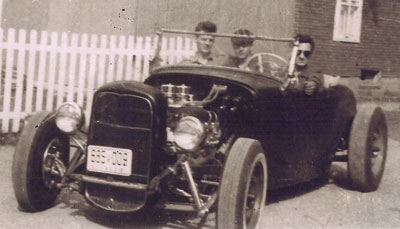
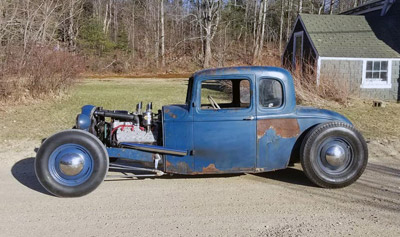
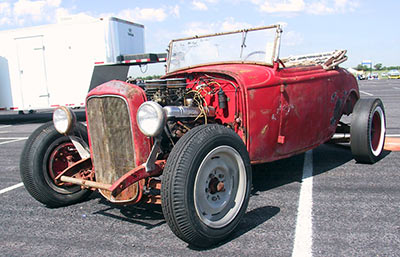

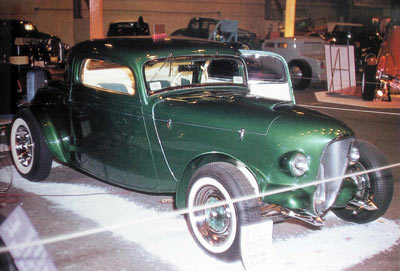

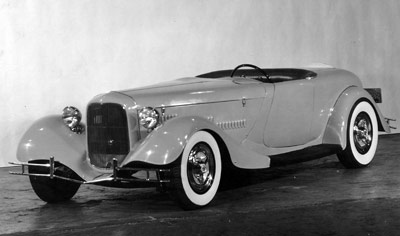


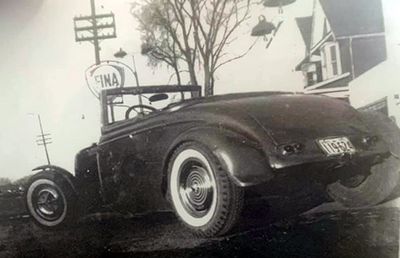
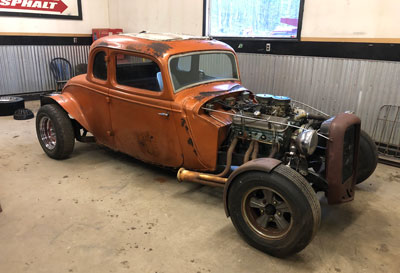
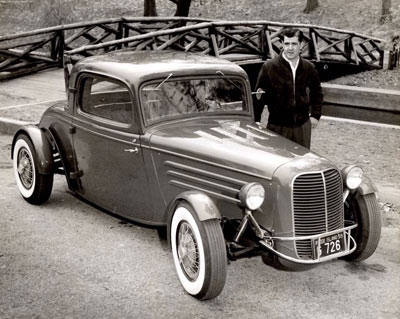

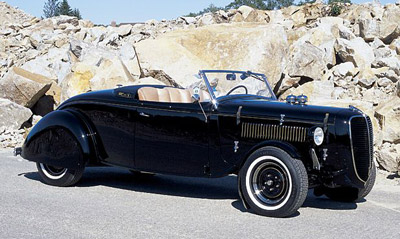
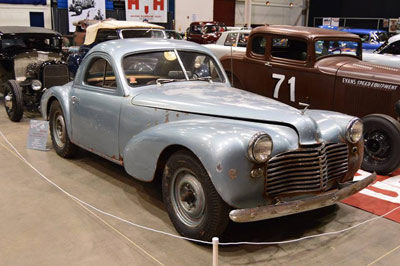

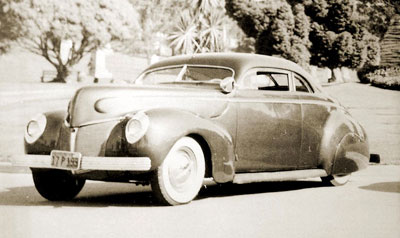
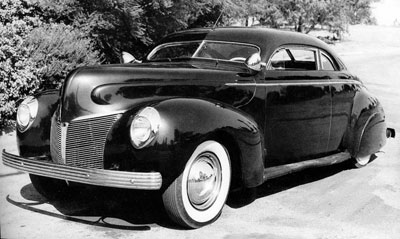


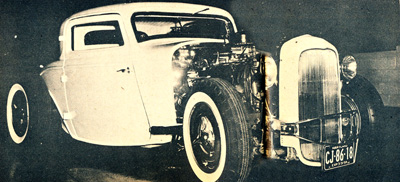

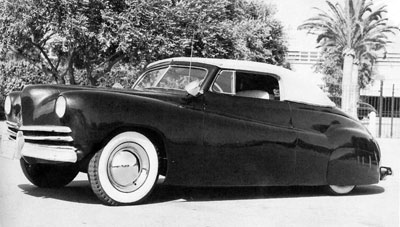



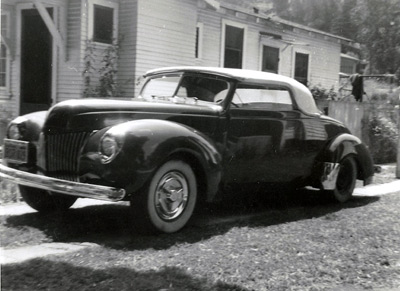
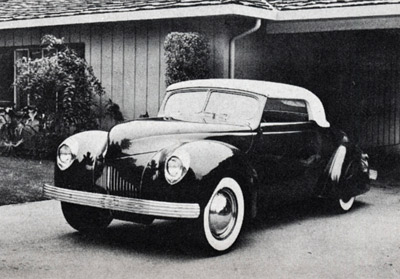
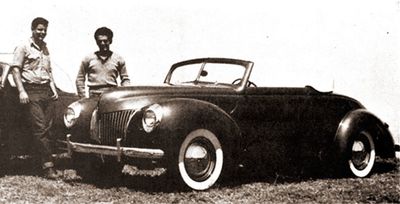



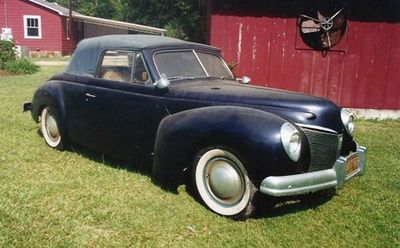
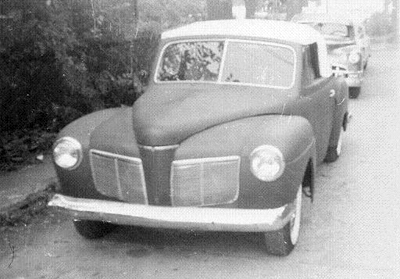

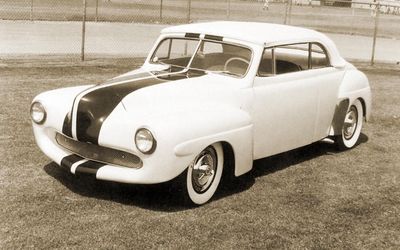
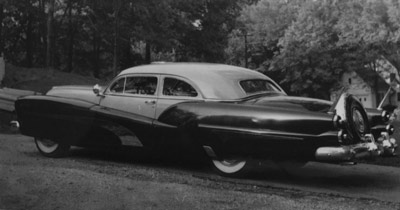



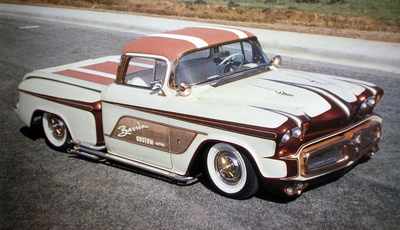
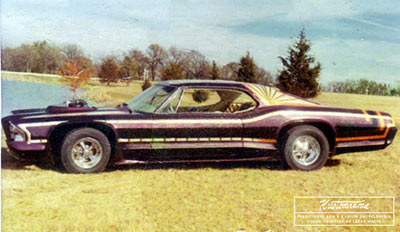

Channeling - to lower the body by cutting out the floor, spreading the body, and dropping it around the frame rails. Also known as "body dropping," channeling is a classic modification technique used in hot rodding and custom car building to achieve a lower vehicle profile. This process involves lowering the car's body over its frame, effectively reducing its height without altering the suspension.
Contents
History and Evolution
Channeling became popular in the late 1940s and early 1950s, particularly among hot rodders looking to improve the aerodynamics and aesthetics of their vehicles. By lowering the body, cars achieved a sleeker and more aggressive look, which was highly sought after in the custom car community. According to Motor Life May 1955, Jimmy Summers is credited for the first body channeling.[1]
Technique and Process
The channeling process involves detaching the body from the frame, then cutting and modifying the floor pan to allow the body to sit lower. This often requires significant adjustments to the firewall, transmission tunnel, and other structural components to ensure a proper fit and maintain structural integrity. The depth of the channel is usually dictated by how low the owner wants the car to sit and the intended use of the vehicle.
Challenges and Considerations
While channeling offers significant visual and aerodynamic benefits, it also presents challenges. Lowering the body can reduce ground clearance, making the vehicle less practical for everyday use. Additionally, it requires extensive modification to the car's interior and structural components, which can be labor-intensive and costly. Ensuring proper alignment and maintaining the car's rigidity are crucial to prevent handling issues and potential damage.
Modern Applications
Today, channeling remains a revered technique among traditional hot rodders and custom car builders. While modern suspension technologies offer alternative ways to lower a car, channeling is still favored for its historical significance and unique aesthetic impact. Builders continue to innovate, finding new ways to blend this classic method with contemporary design and engineering practices.
Channeling is more than just a modification; it's a testament to the ingenuity and creativity of the hot rodding community, reflecting a rich history of automotive customization that continues to inspire enthusiasts around the world.
Articles Showing How To Channel Cars
How-To-Do Article - Valley Custom Channeling a 1939 Mercury
Channeled Cars
Dave Patton's 1924 Ford Model T Roadster
Paul Schiefer's 1925 Ford Model T Roadster
Dean Batchelor's 1927 Ford Model T Roadster
Louis Banto and Jack Perre's 1927 Ford Model T Roadster
Louis Banto and Sal Macchia's 1927 Ford Model T Roadster
Joe Brienza's 1929 Ford Model A Coupe
Kenny Smith's 1929 Ford Model A Roadster
Thomas Dannerbauer's 1929 Ford Model A Roadster
Cam Snappers of Newburyport's 1930 Ford Model A Roadster
Dick Ceola's 1930 Ford Model A Truck
Henrik Forss' 1930 Ford Model A Coupe - Hollywood Howler
Junichi Shimodaira's 1930 Ford Model A Tudor Sedan - Rod Riguez
Michael Brown's 1930 Ford Model A Tudor Sedan
Bengt Wennergren's 1931 Ford Model A Roadster
Buddy Hinman's 1931 Ford Model A Roadster
George Jezek's 1931 Ford Model A Tudor Sedan
Gil Granucci's 1931 Ford Model A Coupe
Joe Tully's 1931 Ford Model A Coupe
Martin Oja's 1931 Ford Model A Coupe
Mike Brodski's 1931 Ford Model A Coupe
Allan Fielding's 1932 Ford 5-Window Coupe
Norman Kopp's 1932 Chevrolet Coupe
Bill Jerry's 1932 Ford Roadster
Bill Kelly's 1932 Ford 3-Window Coupe
Bob Moloney's 1932 Ford Five-Window Coupe
Bruce Olson's 1932 Ford 5-Window Coupe
Charles Crowther's 1932 Ford Roadster
Conrad W. Jacobs' 1932 Ford 3-Window Coupe - "The Klondyke Koupe"
Don Broyles' 1932 Ford Roadster
Jacques Bechard's 1932 Ford Roadster
Johnny Bierfeldt's 1932 Ford Roadster
Jon Grinager's 1932 Ford 3-Window Coupe
Laverne A. Stetzer's 1932 Ford 5-Window Coupe - The York Coupe
Max Magness' 1932 Ford Cabriolet
Mikael Blomberg's 1932 Ford Roadster
Orin Meyer's 1932 Ford 5-Window Coupe
Sid Kayman's 1932 Ford Roadster
Wayne Knudsen's 1932 Ford 3-Window Coupe
Deaner Probst's 1933 Ford Cabriolet - Lil' Dough
Ron Price's 1933 Ford 3-Window Coupe
Bill Smith's 1934 Ford Roadster Custom
Bob Peterson's 1933 Ford 3-Window Coupe
Darrol Finger's 1934 Ford 5-Window Coupe
Darryl Harvey's 1934 Ford Roadster
George Smaldone's 1934 Ford 3-Window Coupe
Joe Brienza's 1934 Ford Convertible - The Brienza Special
Ray Ellis' 1934 Ford 5-Window Coupe
Rick Menz' 1934 Ford Tudor Sedan
Ron Maxwell's 1934 Ford 5-Window Coupe
Shaun Miller's 1934 Ford 5-Window Coupe
Tommy Henderson's 1934 Ford Cabriolet
Alf Rasmussen's 1936 Ford Convertible
Bruce Brown's 1936 Ford
Buddy Hinman's 1936 Ford Cabriolet
Sebastian Rubbo's 1936 Ford Roadster
Glenn Johnson's 1937 Ford Coupe
Arthur Lellis' 1939 Ford Convertible
Bill Pearce's 1939 Ford Convertible
Dave Facey's 1939 Ford Coupe
Harry Keiichi Nishiyama's 1939 Ford Convertible
Jerry Moffatt's 1939 Ford Convertible
Augustus Eberman's 1941 Chevrolet Coupe
Bob Creasman's 1940 Ford Coupe
Fred Cain's 1940 Ford Coupe
Nick De Simon's 1940 Ford Coupe
Paul McGill's 1940 Ford Convertible
Ted Graziano's 1940 Ford Sport Custom
Tim Morton's 1940 Ford Pickup
Bernie Mordawski's 1940 Mercury Convertible
Jimmy Summers' 1940 Mercury Convertible
John Vara's 1941 Ford Convertible
Al Andril's 1940 Mercury Coupe
Johnny Zaro's 1940 Mercury Coupe
Lawrence Garrison's 1940 Mercury Convertible
Jack Telnack's 1941 Mercury Convertible
Martin S. Papazian's Cordster
Peter Brock's 1946 Ford Convertible - The Fordillac
Jack Crabbs' 1948 Buick Roadmaster - The Black Flame
Lloyd C. Hammond's 1949 Ford - The Majestic Lady
Nick Cozzitorto's 1952 Ford F-1 Pickup
George Barris' 1955 Chevrolet Truck - The Kopper Kart
Ivan Peroff's 1956 Buick Century
Dave Stuckey's 1965 Pontiac Catalina
References
Did you enjoy this article?
Kustomrama is an encyclopedia dedicated to preserve, share and protect traditional hot rod and custom car history from all over the world.
- Help us keep history alive. For as little as 2.99 USD a month you can become a monthly supporter. Click here to learn more.
- Subscribe to our free newsletter and receive regular updates and stories from Kustomrama.
- Do you know someone who would enjoy this article? Click here to forward it.
Can you help us make this article better?
Please get in touch with us at mail@kustomrama.com if you have additional information or photos to share about Channeling.
This article was made possible by:
SunTec Auto Glass - Auto Glass Services on Vintage and Classic Cars
Finding a replacement windshield, back or side glass can be a difficult task when restoring your vintage or custom classic car. It doesn't have to be though now with auto glass specialist companies like www.suntecautoglass.com. They can source OEM or OEM-equivalent glass for older makes/models; which will ensure a proper fit every time. Check them out for more details!
Do you want to see your company here? Click here for more info about how you can advertise your business on Kustomrama.


